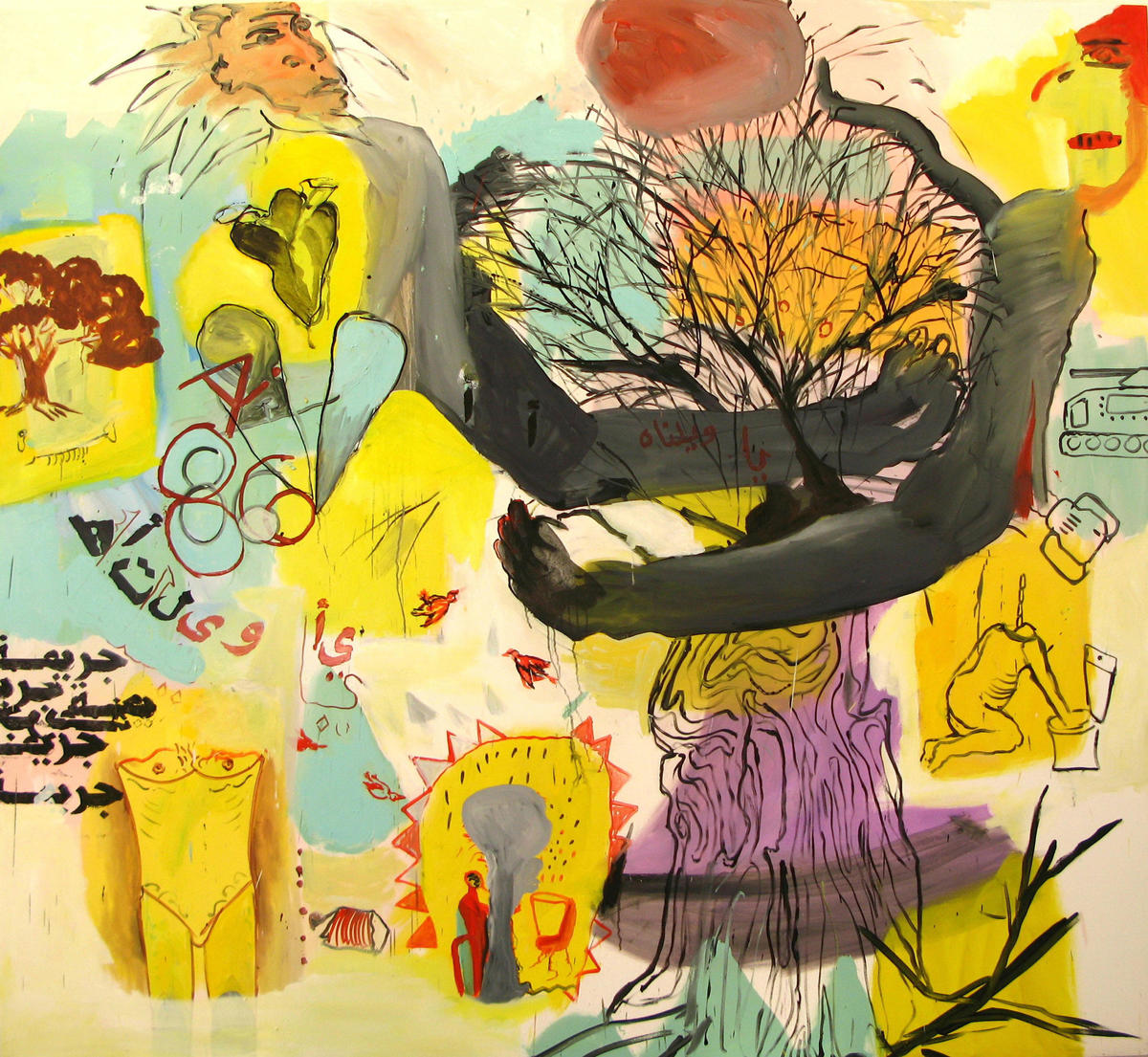
Dubai
Jeffar Khaldi: Wish You Were Here
B21 Gallery
May 13–June 12, 2008
Jeffar Khaldi’s most recent solo show in Dubai, ‘Wish You Were Here,’ featured large-scale canvases that appeared, at first glance, pervasively sweet and generous but that were, on closer inspection, dense and demanding. A Palestinian painter who was born in Lebanon and lived in the United States before settling in the UAE ten years ago, Khaldi has mounted several of his own exhibitions at B21, the Dubai gallery he founded in 2005. Along the way, he’s developed a highly individual and recognizable vocabulary of conceptual signs and painterly gestures. His work is as much about aesthetic investigation and material experimentation as it is about semiotic and political concerns. In relation to the artist’s overall oeuvre, ‘Wish You Were Here’ brought these two strains into their clearest focus to date.
In the painting Phase Two, a nude figure stood in tall grass, back to the viewer, gazing at a landscape and leading the viewer to look in the same direction. The figure was rendered in harsh strokes. The sharp white contours on the head appeared to refer to tribal face paint, but then they repeated in the landscape as cobwebs on a mountain of boxes, shipping crates, tents, domes and houses, all floating on a wooden ship in a minuscule bay. Surrounded by volcanic pink and orange, the ship sat heavily, obviously not going anywhere. The figure cradled a patch of red that hovered between becoming a bleeding heart and remaining a simple brush stroke. Applying paint in a dynamic way — fluid and thin here, sharp and determined there — Khaldi revealed his subject slowly.
In Sooner or Later, a row of camouflage warehouses receded into the distance; dwarfed villagers and trees were pushed to the periphery by the monumental structures. White forms shaped like boulders or sandbags seemed to guard the warehouses. A predatory creature strode ahead; at his feet were decapitated bodies, stumbling around like chickens. In South-West, viewers stood on the other side of the wall. The warehouses were in the distance. Bricks fell from the sky, and a tornado of black paint rose from the bottom of the canvas. A deer stood awkwardly on a patch of green, a hilarious reference to traditional landscape paintings of vistas and animals at pasture. Khaldi’s deer was docile, oblivious to the apocalyptic surroundings.
There are very few painters among the contemporary artists in the Arab world who have risen to international prominence through biennials, festivals, curated exhibitions, and other such critical platforms, as opposed to the more commercial avenues of auction house catalogues. But to consider the history of art in the region requires meaningful engagement with a storied lineage of works on canvas. The difficulty in confronting Khaldi’s work is determining where and how to position him — and in relation to whom.
Even those who would rather not make political art can find it impossible to escape the politics that implicate an artist with or without permission or intent. Artists in the Arab world expend a significant amount of energy dodging labels. And while some fold that effort into their practice, others find sanctuary in formal abstraction (generally guaranteeing that they’ll be abandoned by critics). But there are signs pointing to a revival of figurative painting in the region. Khaldi himself has gradually moved away from abstraction, the focus of his early works, toward representation.
One may read this shift as a rejection of multiculturalism, identity politics, and those forms of art-making, so popular on the international biennial circuit, that claim to be critically engaged but turn out to be disappointingly bland. In their celebration of the diverse and the marginal, such forms demand that viewers respect a vacated, decaffeinated Other, paradoxically deprived of agency and retaining only superficial signifiers of cultural specificity — the Muslim hijab, the Mexican sombrero, Asian politeness, Western European courtliness, Eastern European roughness, and so on. Khaldi’s work lives entirely outside the realm of identity politics. His paintings don’t didactically tax viewers with Arab or Palestinian signifiers (his whimsical use of the Palestinian flag notwithstanding). His subjects don’t ask for forgiveness or understanding, and he doesn’t indulge in self-pity. His paintings are sometimes ambiguous, sometimes blunt. They are, for this viewer, like a double espresso after too many years without caffeine.